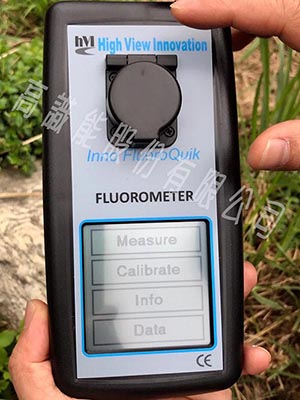"Chlorophyll a" fluorescent detection
All plant life contains the primary photosynthetic pigment chlorophyll a. Microscopic, planktonic plants, or phytoplankton, occupy the lit zone of all water bodies. With over 70% of the surface of the earth covered in water, phytoplankton and photosynthetic bacteria are responsible for almost ½ of the planets primary production while their total biomass comprises less than 1% of the total plant biomass. These extraordinarily efficient plants also act as the single largest CO2 sink on earth. For these reasons alone it should be clear that there is an interest in measuring concentrations of phytoplankton. Chlorophyll a fluorescence is the most versatile, sensitive and easy way to measure the concentrations of phytoplankton in water.
The quantitation, through extracted In vitro analysis, or estimation, through in vivo analysis, of chlorophyll a concentration supplies information on the abundance of phytoplankton present in all aquatic environments. Since chlorophyll-containing organisms are the first step in most food chains, the health and/or abundance of these primary producers will have cascading effects to all higher organisms. Therefore, the determination of chlorophyll concentration is one of the key indices in monitoring the health of any natural system.
Chlorophyll measurements are also used to directly monitor phytoplankton populations. Examples include, but are not limited to, the monitoring of chlorophyll in natural marine and freshwater environments, reservoirs, water and sewage treatment plants, and aquacultural systems.

➠ Please see the following file: Chlorophyll a Fluorometer